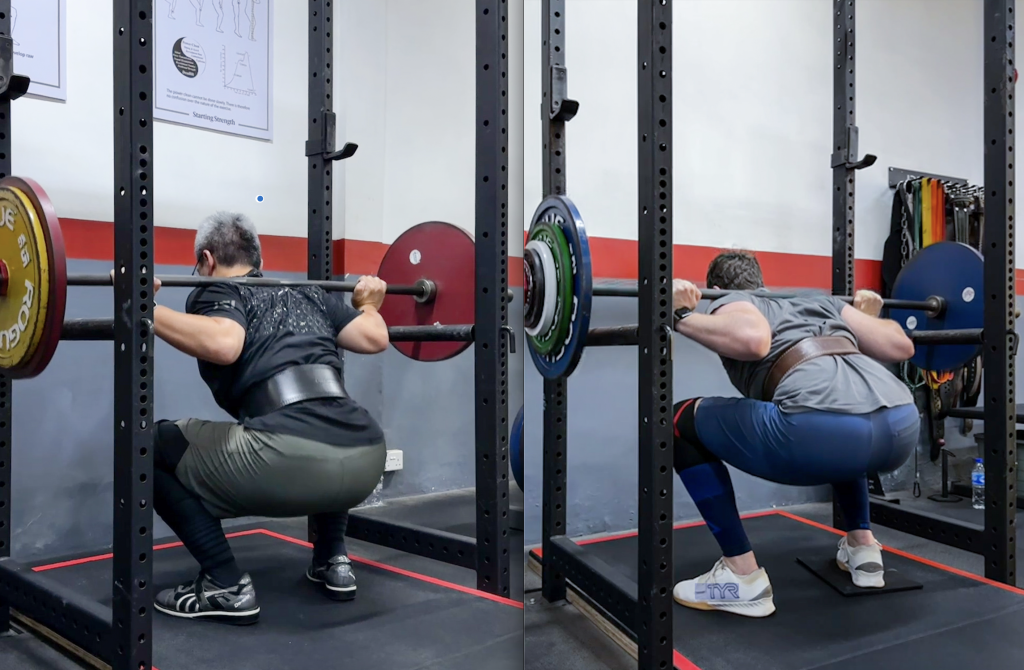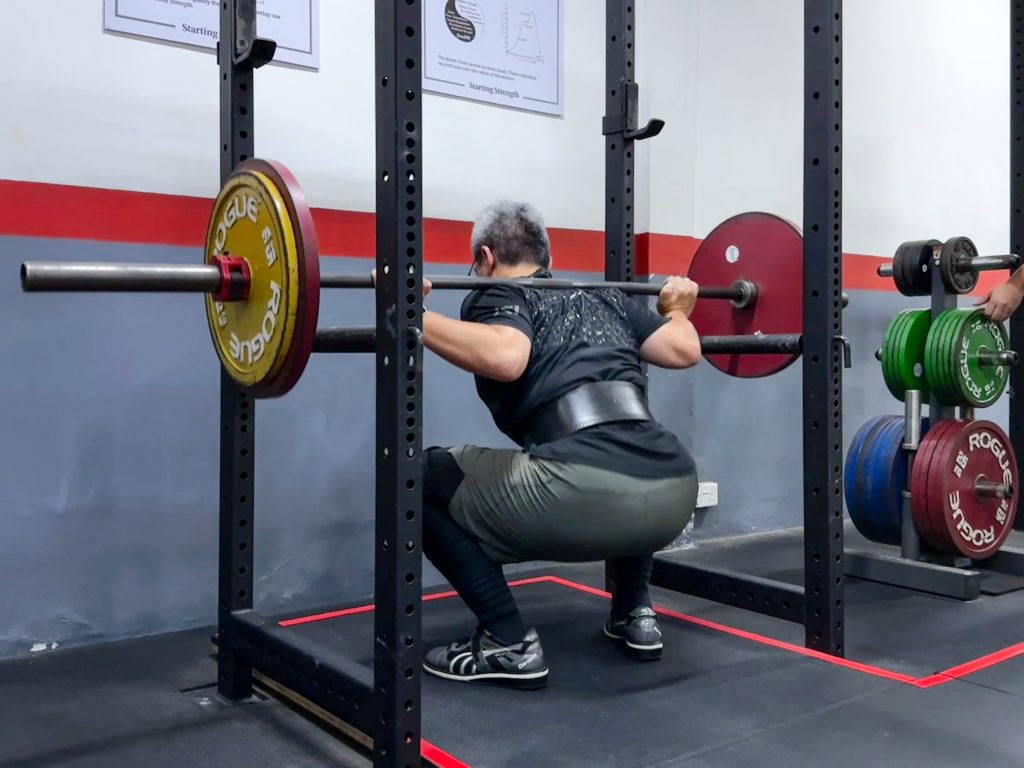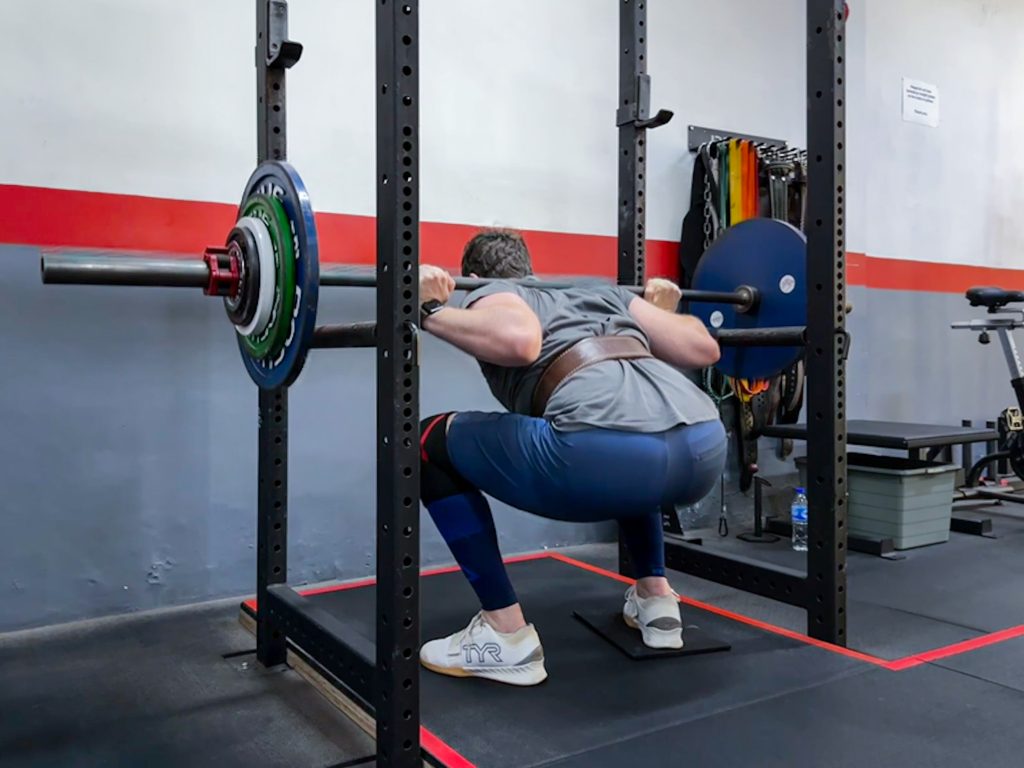
You’re new to barbell training, not quite sure how to do the lifts and still trying to figure it out on your own. Looking around the gym, you spot a lifter squatting some pretty heavy weights. You naturally assume that for him to be that strong, he should know what he’s doing and how to squat properly. Based on that assumption, you try to mimic his technique.
Alternatively, you’ve watched some Starting Strength how to videos where the coaches go through step by step on how to do the lifts. These guys are the experts; they’ve got to be correct. So once again, you follow their instructions and try to copy how the lifters in the video look like when they’re doing the lifts.
Or maybe you’re already a client with us in our semi-private class. In between your sets, you observed that the lifter on the next platform has a very pronounced lean (horizontal back angle) when he squats. When your coach comes around to your platform, you ask the coach, “He’s very leant over when he squats, should I do the same too?” But instead, your coach says no and that you need to be much more vertical instead. Why?
“Correct” doesn’t mean it’s correct for you
As coaches, we get questions like this pretty frequently, especially from lifters who are newer or visual learners. But how a person’s correct lift looks is a function of two things – what model the lift is based on, and their anthropometry.
For us at Hygieia, the model is consistent (the Starting Strength model). So the variable is usually your individual anthropometry (the specific proportions of your body). In addition, some people may have physical limitations that require deviation from the model. In these cases, further adjustments may be needed.
What this means is that any two people can be squatting “correctly”. But someone else’s “correct” squat might look very different compared to your “correct” squat.
What is the Starting Strength model
When people think of Starting Strength – two things come to mind. The basic barbell lifts (squat, press, deadlift, bench press, power clean) and how they are done, and the novice linear progression (NLP). Well, Rip (the founder of Starting Strength) also comes to mind but let’s keep it to just the training side of things.
To put it simply, Starting Strength is a systematic approach to increase one’s general strength. Why these five lifts are chosen and how they are performed is derived from first principles to fulfil the model’s purpose – to get one stronger.
There are a series of concepts that form the basis of the method and understanding them will give you a better appreciation of the method and will equip you with the knowledge to apply it to your circumstances.
The main concept to understand is the moment model – essentially, our bodies and how we interact with our surroundings is governed by the laws of classical mechanics. We function as a system of levers, with bones as levers and joints as fulcrums. By applying the understanding of mechanics to barbell training, we can quantify the most efficient way to lift the most amount of weight. Heavier weights lifted = stronger you.
It’s also important to understand anatomy – the various muscles and joints and how they contribute to each lift. This helps us analyse which lifts should be included in the program and how to perform them for you to get the strongest. For example, we prefer the low bar back squat over the high bar back squat, because it allows the lifter to place more load on the stronger hip extensors than the not-as-strong knee extensors. Once again, the more weight you can lift, the stronger you’ll be.
Another key consideration is physiology. Understanding this also adds to the process of analysing which lifts should be in the program and how they’re done. It also enables coaches to make better programming decisions aimed at achieving the goal of getting stronger, which is at the heart of Starting Strength.
Check out this example of an inefficient deadlift due to unnecessary moment arms, where extra force is required to overcome the inefficiency, making the rep harder than it needs to be.
Applying the model to you
You may have heard some advice along the lines of “use the technique that feels the most comfortable”. That is utter nonsense. If you’re trying to get stronger, the focus should be on doing the lifts in the most efficient and safe way, not finding a comfortable way to do so. For example, the deadlift setup position can feel uncomfortable. Ditto for your shoulders for some lifters when first learning the low bar squat position.
There is however, a distinction between discomfort and pain. At Hygieia, our clients are mainly older adults. This demographic usually come with a laundry list of aches, pains and injuries that they’ve accumulated from their years of being on this earth and living life.
This is where a coach comes in. It’s our job to make adjustments around your situation – to discern if it’s discomfort that needs to be worked through, or pain that needs to be managed with adjustments.
For example, an older guy with wonky shoulders may not be able to get the bar into the low bar back squat position on his first session. We need to ascertain if it’s just soft tissue tightness, or it’s his shoulder anatomy that doesn’t allow him to get into the low bar position. If it’s the latter, we might opt to do a high bar squat instead. Or in more pronounced situations, we might need to use a safety squat bar.
As much as possible, we want you to lift according to the model, but we’ll make adjustments to work around your limitations, if necessary. This is another differentiator of how your “correct” lift may look like.
Anthropometry differences and why they matter
Our body proportions are not all the same – we have different anthropometries. Despite conforming to the same model, lifters with anthropometry differences will look different doing similar lifts.
The squat and deadlift are the lifts that showcase these anthropometric differences the most. Without a deep understanding of the Starting Strength model, you might assume that the squat has to be done with a very horizontal back angle and the set up for the deadlift is done with very high hips.
Take two lifters, someone with long limbs and a short trunk and someone with short limbs and a long trunk, and get them both to squat. Despite both squatting “correctly” and conforming to the model, they’ll both look different. The back angle of the lifter with the long limb/short trunk combination will be more horizontal than the lifter with the short limb/long trunk combination. Even if both lifters have long limbs and short trunks, one might have long femurs and short shanks, and the other short femurs and long shanks – their squat will look different as well.


If you taught yourself through copying other lifters, and just happened to see a lifter with a similar anthropometry to yourself, then all’s fine and dandy.
But what if it’s not? If you have an “average” anthropometry, but copy the long limb and short trunk lifter, you will end up too leant over in the squat. The opposite applies if you copied a short limb and long trunk lifter – you would be too vertical.
Understand, don’t copy blindly.
I repeat: don’t get into the bad habit of observing another lifter and copying the way they lift. The better way is to understand the model, understand your anthropometry and then figure out how to apply the model to your situation or limitations (if any).
Can you do it yourself without a coach? Of course you can but it takes a lot of time, effort and a whole bunch of trial and error to get right. Here are some tools that can help you self-evaluate: video yourself, a checklist for form, and a training log for your sessions. (But don’t use a mirror.)
This might sound like a shameless plug for our services but if you want to save time and effort and make sure you get it right from the get go, hire an experienced coach. It’ll be one of the best things you spend your money on towards your training, saving you a lot of trial and error and your training will be far more effective. Because that’s the value of a good coach – by leveraging off our deep understanding of the model and our experience working with diverse lifters, you’ll start lifting correctly from day one.

